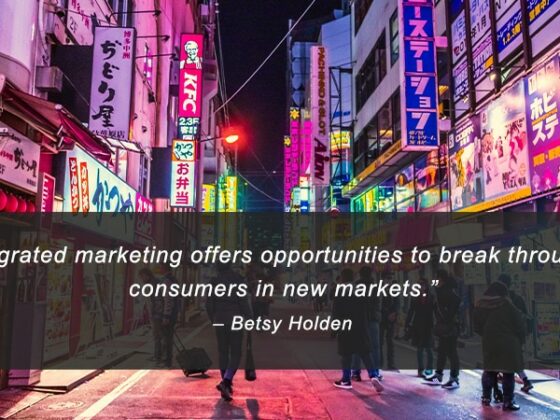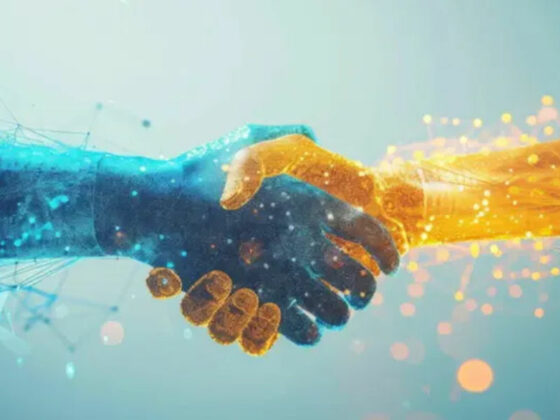Josiah:
We’ve all heard of Microsoft, but do you know what they are doing? in the world of hospitality and travel, it turns out a lot and a lot of things on the cutting edge of innovation that you should be aware of. Stick around to hear more from Microsoft’s Global Director of Travel and Hospitality, Shane O’Flaherty.
Shane O’Flaherty is the Global Director of Travel, Transportation, and Hospitality at Microsoft, and he brings deep hospitality expertise to this role, from experiences that included leading Forbes Travel Guide as President and CEO, where he advised brands such as Four Seasons and Ritz Carlton on customer experience, design, and measurement. In this episode, you’ll hear the challenges he’s seeing in the market today opportunities for AI as an empowerment layer, and how to future-proof your tech stack. But before we get into that, here’s Shane explaining where Microsoft is focusing these days. for a little bit of context.
Shane:
I think we kind of look at it in three spectrums. One’s around customer experience, the next one’s around employee experience, and the third area is around intelligent operations. So they’re kind of the three pillars. We’ve all heard a lot about generative AI, as an example, or the cognitive services family of AI, and then how do you use that in the market today to drive more operational efficiency, stronger productivity, a more hyper-personalized experience for the consumer, so and we’re seeing lots and lots of new use cases around that area in the marketplace. So you know those are kind of the buckets. But then how does AI layer on top of that And how do we democratize AI to help the industry, and empower the industry to do more? So, when we look at kind of the customer experience, historically I’ve been in the hospitality travel space for decades but you know, still some of the challenges are around data, data, silos of your customer information. How do you kind of lift that data, how do you intelligently stitch it together with AI to really have a more holistic view of your consumer? And then how do you drive kind of this in-journey orchestration of the consumer? So I think the hotels are trying to get to that path, because, if you think of you know, when you arrive at a hotel you have your mobile key and then it’s kind of a self-service environment for individuals. They have to go downstairs to ask questions or pick up the phone. So how do you move down the path of driving a better digital journey for the consumer and reaching kind of all those different types of multi-generation audiences, especially Gen Z, I think the industry as a whole is trying to move down a path to address that, which is super exciting. And then how do you layer AI onto it? How do you layer? you know, long-term decentralized ID becomes a big product down the road. Or, as a consumer, I own my own identity and I’m willing to give you information if you’re going to make my journey a better journey. And then also, what type of tactics do you use to engage the consumer, which is all around? you know, we believe it’s around micro-transactions of content to make that journey a better journey based on why I’m going. And then you know, help me navigate my journey to the best of your ability. So that’s kind of where, directionally, we see it in kind of these Horizon 1, 2, and 3. And probably the industry is probably in Horizon 1+ a little bit, but ultimately that’s where this, you know, and I get the other issue in travel, I mean as a consumer, it’s a friction whole journey, meaning you got to download the airline app, you got to download your transportation app, you got to download your hotel app. I got all these apps I’m using for one journey and I may be only going for maybe one day or two days, so anyway. So how does that all play in and how do we move the industry to, you know, move from kind of these private parts to more of a public park, of sharing information across the data ecosystem to drive a better, frictionless journey for the consumer? So those are all areas around the customer experience that we’re seeing other industries navigate pretty well, and you know how the hospitality navigates that down the road.
Josiah:
Why does removing friction from the traveler experience matter? Can they just deal with it?
Shane:
Well, I mean, it works today, you know everything works. But can it be better? Sure, you know. And can you make my journey better and more friction-free? Can I raise my customer scores, through a better customer experience? Sure. So how do I continually drive? But how do I drive more with the digital world? Because we do a good job from person to person? And then, of course, as you move to the other side of the coin, with the employee experience, the challenges in the labor market, how do I do more with less? How do I empower my employees with technology, communication, and collaboration tools to drive more operational efficiency? How do I take away all the paper You know, and how do I move to just automating processes that should be automated And then, all of a sudden, then, after you automate it, then how do you embed AI on top of that and allow your employee to have information at their fingertips to drive more communication and collaboration? We’ve seen this during COVID and post-COVID. We’ve seen this as an example in the travel sector. We’ve seen the airline sector really invest in employee-based tools really to drive more operational efficiency across the board. So every flight, they spin up a group for that specific flight and everyone is on one platform communicating and collaborating. We’re using adaptive cars, they’re using AI, but everything they can do to drive more operational efficiency, you know, and if the airline sector does it, then theoretically it will come to the hotel sector. But if you don’t have enough staff, as you’ve had before, how do you use automation to drive more efficiency across the board? So we’re starting to see hotel companies look at that and create kind of these super apps, what we call a super app for employee communication collaboration. Microsoft has their teams application that does that for the frontline worker. Instead of using texting and group chat and, you know, and WhatsApp and various things like that. How do you really create some enterprise grade tools to give to your employees? I mean, it works what it does today. But then there’s challenges around data security, privacy when you’re on, kind of in this open forum there. So at the Microsoft booth, as an example, we’ll have our frontline product worker team from the teams group showing exactly what Microsoft does around driving more productivity for the frontline worker, which represents travel, represents 10% of the global workforce, you know. And how do we give them the tools that they need to drive more operational efficiency? And if you think, during the pandemic they moved to different industries. You know they moved to. You know working in Amazon and the warehouses. You know deliveries. I mean Amazon hired its own people, all very tech enabled, and they come back to the hotel industry and it’s a little challenging. My daughter worked in the hotel industry Yeah, and she just last summer and she’s like, wow, this is super And she’s 22. She’s like this is super old school.
Josiah:
I’m curious from your perspective, looking across the industry, do you feel that if you had to choose between making if you can only make one investment on guest facing technology or employee facing technology? I’m curious where you see the bigger gap.
Shane:
Yeah, it’s empowering your team members. Microsoft did some research right after the pandemic around in different verticals and you know the employees of the properties. the employees feel like hotels have invested more in consumer based technology Historically. then they have an employee facing technology And so now we’re seeing the shift in different sectors. in the travel sector And we see it coming ultimately to the hotel sector, because they’re your frontline And if you can get your data data state correct and that information goes up to your employee, you know kind of real time data And then that goes up to the consumer. you know, and then your employees ahead of the curve as opposed to the consumer. You’re going to drive a long term. you’re going to drive a better customer experience with them.
Josiah:
I love that and I always love inspiring people with what is possible, and I wonder if there’s any other best practices you’ve seen. You talked about the airline industry really empowering their teams. Maybe within the world of hospitality hotels, have you seen an example of a great implementation of technology that’s really elevated the employee experience?
Shane:
You know chains like citizen, amazon, example, they do an amazing job of. You know this tech enabled. You know more do more with less. You know limited staffing to a certain extent but You know the real time visibility, see exactly what’s happening within the context of the hotel all the way down to the room level In your embedding predictive maintenance inside the room. So you know digital asset goes down, it’s. You know they have the ability to send a work order out. You know you don’t send maintenance up because you already know what’s going out. So the idea that and then you’re or you can shut down the room so the guest doesn’t have to go into the room and say You know or check in, you know because they already know certain digital assets in the room are not working. So I think anyone, when you look at someone like citizen there, always really it’s the tip of the spear In relationship to landing high tech with high tech with high yeah, that makes sense and you mentioned before I can be a layer that empowers many of these processes I spoke about six months ago around.
Josiah:
I’m gonna link in the show notes to that article because you shared a lot there, a lot of people got value from. I’m curious now you know six months later, what are you seeing as opportunity for using AI as an empowerment layer in hospitality technology?
Shane:
Yeah, i mean I think the biggest use cases we’re seeing kind of across the board and begin in hospitality, is probably number one around the call center. How do I drive more operational efficiency and, you know, enhance customer experience? so you know, in the past example, if you get an email in someone’s asking for refund And then you’re, you get it into the call center, you have to route it to a certain place. So an individual has now we’re just using chat gbt can read the read the email and say, hey, this goes to John, this goes to bill, this goes to Susan. Based on their core expertise and what they work on, the idea is your, your automating things that can, and then when people need help media, human voice, you can. They’re not waiting five, ten, fifteen, twenty minutes because that the person who is doing all these mundane tasks, those are going away. And so the call center we’re seeing some tremendous use cases around And I can be an email or someone just saying hey, here’s my problem and it’s just how I arrived the hotel at this time. I try to check in, i couldn’t check in there and whatever they. So they can just say what they need and then the chat gbt will just read it and direct you to the right And give that information in advance and summarize essentially summarize The discussion. Maybe someone talk for two or three minutes, you know, and you can just say, hey, can you summarize this? and summarize the text of that into you know a small paragraph that I can read and articulate instead of listening to the consumers, everything that you’re doing is driving a better experience for the consumer, is driving more operational efficiency on the call center side. Lots of different use cases, as everyone knows, around marketing, sales, marketing, content creation, all that type of stuff. We’re seeing some great use cases around that as well Driving, you know, fish and things that would take a human 10 years to do, our five years to do it can be done in a day, which is fascinating it’s an exciting time to be in technology, exciting time to be in hospitality.
Josiah:
But I like what you said the north star here is what is going to be a good experience for our guests, our customer right, and that that’s sort of a guiding light. I’m curious how you think about future proofing your operation with technology, because you talked about some pretty advanced, futuristic things where there’s micro transactions or a portable identity, things like that. In a world where you know here in twenty, twenty three, you know sometimes you have to kind of plan years and years in advance, what advice would you have on preparing for a future that has some of these brand new opportunities that we’re not even starting to in hospitality?
Shane:
Yeah, i mean, i think of individuals and companies today and we say it a lot find some what, like where we’re low hanging, where you know there are bottlenecks in my company. It couldn’t, you know, could be back at the house, could be around check-in, it could be around your running VIP list, whatever it is, whatever issue just takes lots of you know, use this technology, fail, fail fast and then move on and try again and try again. But this idea of how do you innovate while I run my business, how do you do both in kind of this, in these type of two swim, and the technology curve, as you know, is just going like them And it will be embedded in all of the Microsoft products and services. So you have, you know, m365, email, powerpoint, excel, all of this is a, all of these what we call at Microsoft are co-pilot. you know, essentially we’ll have a co-pilot for everything you do. we’ll draft an email for you. We’ll draft an email for you know, we’ll reach into your CRM and grab the data off your CRM and we’ll pull that into the email. So it’s basically kind of you having this kind of assistant, smart assistant. they do very well on, you know. so it’s a super smart assistant next to you that’s doing the work for you. So how do you embrace that And I think also once it’s natural inside the tools of what you use every day? you know teams or what you call it, or you’ll see the usage of it And instead of today you type three words, or you type and then there’s three words and now it’s gonna actually write the whole email. So I’m used to today where it goes that extra three words and I hit yes. Now it’s just gonna theoretically can type the whole email and you know response is quicker, drive, more efficient And really ultimately is give you more time to be with the consumer, which again drives that emotional connection with your consumer, with your bum, and you can have heads up all the time, as opposed to you know getting in, you know trying to check someone in with your head down. You could just say, hey, please check Mr Smith in, you know, and it can also do that.
Josiah:
It’s great. it’s great. It feels like technology is fading into the background a bit, which I think it’s great yeah.
Shane:
Yeah, I think in the past humans had kind of had to adapt to technology. Now technology has now officially adapted to humans with kind of this next generation.
Josiah:
So that’s great, And I guess you know. The last thing I’d like to touch on is your advice for hospitality leaders that are thinking about evaluating technology. We’re heading into a week where there’s a lot of trade shows, a lot of people shopping for technology, And I think what you just mentioned is actually a good first criteria. Is this technology adapting to our people, how we operate? Are there other pieces that you’d advise those listening to as they go through that evaluation shopping process?
Shane:
Well, I mean, I think it’s looking again based on your hotel and what your vision is, around X, Y or Z. But I mean, I think what is? give you an example there are and this is a Microsoft example the large scale airline had, you know I don’t know 16 different applications for their employee and they’re all siloed together and they’re trying to stick together. The lie is that, huh, you know, this one application does 80% of that, And then I can layer these two or three proprietary applications As an example, let’s say it’s the pilots, because the union issues. it’s a very challenging system, So embed that inside this framework. So my mindset is how do you bring down all these disparate tools that you have? and are there things at once? And it can limit the number of tools that you’re managing from even an IT perspective, And we’ve seen success in that area. In this day and age, I think it’s to keep pace with technology and to try to build it internally. If your focus is really as a, how do you, if you buy, then sure that all the tools, these tools that are layered into what you’re doing, And then again trying to move in a more open environment And, as you can imagine, behind us. It’s spaghetti mess, But there’s ways to, and the systems don’t talk to each other, but new tools were seen for a long time That I’ve seen out there probably five, seven years. I’m like, oh my God, every tool, every hotel could be, should be using this tool, And then you faster. And so there’s. There’s some very basic tools out there, really low hanging food around the customer experience, around your operations, around the employee experience. That could do a tremendous amount for you. But the key issue then is how do you scale it out if you have a large number of hotels as well? And we’re again what’s the ROI And what’s the business outcome that you’re trying to drive? So it’s it’s instead of to me, it’s looking at what type of business outcome you were trying to drive over the next 6, 12, 18 months And then, based on those two or three pillars, things you should be looking for.
Josiah:
Yeah, our wise, keep it. I would also suggest that there could be a risk of obsolescence as well, and I think that was at the end way investment conference that I it’s surprising. It surprised me that being a recurring theme even among CFOs and investors saying, hey, there’s a certain sense of some of this may not be directly connected back to a dollar amount, but you know we need to try to do our best to do that. But you could also become obsolete as a brand if you’re too far behind the curve here And I feel like you know something you mentioned earlier that took jumped out at me was you know that bill versus buy decision. It feels clarity on your brand perspective of how are we going to uniquely provide hospitality. Maybe that’s what you need to be focused on, because, if I heard you right, it feels like everything else stems from that, and then you think about technology that supports that. So you should be thinking about that versus you know iterations of building your own software.
Shane:
Yeah, and I think the other thing that the company is trying to be well, how do I drive more revenue out of the consumer, how to become more of a retailer? You know, how do I move off my legacy platforms? I mean, many companies are, you know, say I’d love to do X, y and Z, but I’m still trying to get off this legacy platform. So kind of we’ve been our enemies in the hospitality space because we haven’t moved fast enough from a tech perspective. But I think the post COVID world order I think it feels and just feels like business IT are aligned. They have a mission now together, they’re working together to drive success, whether it’s around the customer, the employee or operation. So we see a tremendous amount of opportunity for the hotel space And you know, they now know they need to invest and they are investing, which is the most exciting part. And you know, fast forward a year or two or three down the road, you know what will your hotel stay look like from a digital be very interesting.
Josiah:
I love that Before we go, i guess, is there. I’m curious. you strike me as someone who’s always kind of has your radar up for new interesting things, and whether it’s in technology or hospitality broadly. I’m curious if anything, any idea or things you’ve been sort of fascinated by recently That kind of has your attention.
Shane:
Oh, i think that the most fascinating and this is me just because I worked at my last company was for travel guide, so it was all around the customer experience and all around the employee experience. But I think the most fascinating part that I’ve seen and you can apply this to any use cases around but this ability for chat, gbt, to understand employee sentiment and then also understanding in real time. So if your employees are all on these different channels, they can read through all the channels and give you immediate feedback on, hey, what’s happening in the hotel. It looks like, based on the chatter on this channel for I don’t know, as an example, this group movement there’s looks like there’s a problem going on And I’m a GM or I’m someone in the hotel and I have visibility, and it’s saying, hey, based on X, y and Z of these you know five groups in house. As an example, it looks like group number group for X, y and Z is going on with X, you know, and this is, there’s a red flag, so so, based on the employee sentiment, it’s going to throw up a red flag and say, hey, it’s not great. And now before I had no visibility into that and someone picked up the phone and called me And if you layer that and scale it, you know at a massive basis you could, you could do this. And let’s say the airline sector and say, hey, based on the chatter, this flight may be delayed because we already know mechanically one’s going to delay. We’ll use that on the employee side too, or, excuse me, on the consumer side, and really understand real time consumer sentiment. So I think that’s a fascinating part of that ability to have actionable insight in real time, just based on the chatter. Going on, digital chatter, let’s say, at my hotel from my employees and I think that’s an experience you know, measurement training program that used to run it for travel guide, i mean that’s, that’s phenomenal information because that can drive such a better experience, which then ultimately drives a higher rate and yada, yada, yada, the virtuous circle of light.
Josiah:
Yeah, no, it’s fascinating. You mentioned that from your experience, you know, and I think it resonates with me because I started my career in a satisfaction sentiment monitoring through surveys and things like that and in social media. But you kind of look at the exponentially larger data set you have if all of your communication workflows are digitized, And I think that’s where we talk a lot about digital And I think that’s where that’s where it becomes important. Right, It’s like okay, now you have all the underlying data where AI can prosper insight. So there’s immediate benefits and there’s some secondary benefits as well.
Shane:
Correct. I mean, and that’s really taking your operational data, your employee data, your customer data, I mean, and bringing it all together in this kind of large data state. And Microsoft has a product called Faber as an example. That’s a, you know it really can reason over all your data data, any question you want. And you know we’ve been in the industry a long time and we look at all the different verticals like we’ve been in the meeting. I’ve been in the industry for 30 years but I think the idea that you know you can ask a question and you can get data back and then make more digital decisions with some subjectivity associated with it, i think that’s really the Nirvana you want to get to, as opposed to just straight subjective decisions. because I’ve been doing this job for 20 years, i kind of know what I’m doing. Can you get better? Sure, you know, and how do you do that. And that’s really with understanding the data and the data.





